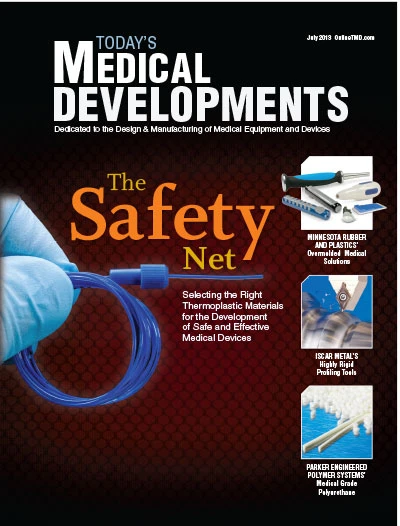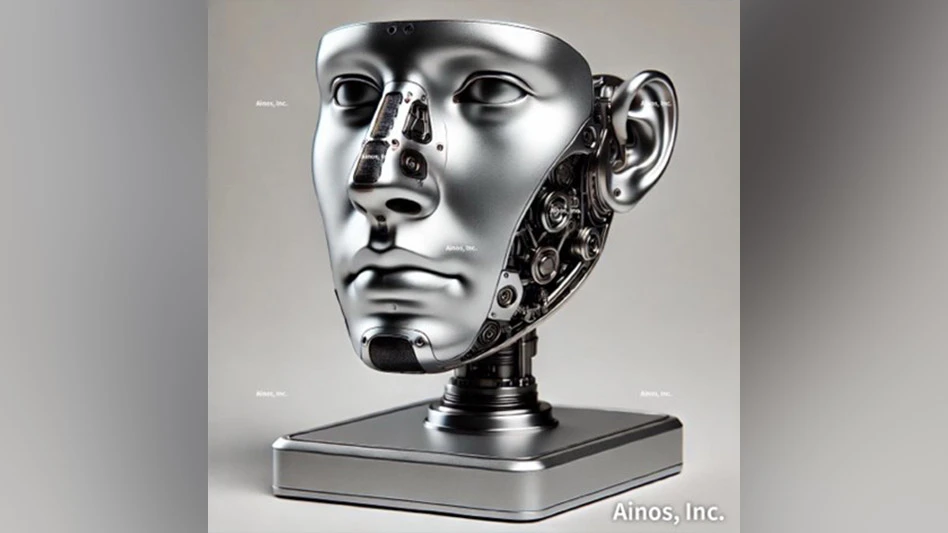 The launch of an innovative and intuitive dry powder inhaler (DPI) represents the culmination of a collaboration that has spanned a number of years. The experts at Cambridge Consultants and Chiesi Farmaceutici had an initial goal to develop a next-generation dry powder inhaler, initially based on improving an existing design. However, as early concepts were generated, a new and novel design evolved with distinct benefits over the original starting point. Exceptional drug delivery performance was always going to be desirable and, as with all dry powder inhalers, that is a combination of device design and drug formulation. While Cambridge Consultants engineers were responsible for device design, the formulation also has been key in achieving this objective as we worked to develop NEXThaler.
The launch of an innovative and intuitive dry powder inhaler (DPI) represents the culmination of a collaboration that has spanned a number of years. The experts at Cambridge Consultants and Chiesi Farmaceutici had an initial goal to develop a next-generation dry powder inhaler, initially based on improving an existing design. However, as early concepts were generated, a new and novel design evolved with distinct benefits over the original starting point. Exceptional drug delivery performance was always going to be desirable and, as with all dry powder inhalers, that is a combination of device design and drug formulation. While Cambridge Consultants engineers were responsible for device design, the formulation also has been key in achieving this objective as we worked to develop NEXThaler.
Design
The design brief was that the device should be intuitive, easy to use, and have performance independent from applied flow rates. It was important that the device incorporated an accurate and user-friendly dose counter – a key user benefit and a requirement from the FDA. It was also important that the device was based on a reservoir of drug rather than discrete doses as in some other marketed products. A reservoir allows for many more doses, but presents its own challenges, especially in environmental protection. Inhalation powders and their aerosolization tend to be sensitive to moisture. The problem is overcome by using an innovative desiccant block incorporated in the device and designed to manage the moisture level in the reservoir.
Usability
Overall, usability has been the key requirement and therefore the design is based on achieving the simplest possible user steps: open, inhale, close. The program has run for several years with multiple activities contributing to the overall timescales – including complex device design and engineering analysis, innovative drug formulation development, transfer to manufacture and industrialization scale-up. Timescales were typical for this type of innovative combination drug product, with development of the device in parallel to the drug formulation development.
Cambridge Consultants engineers led the device development from the initial concept generation through to prototype development, detailed design, transfer to manufacture, scale-up, and design verification. The essential requirements of robustness and reliability in mass-produced, injection molded devices subjected to stringent medical device regulations has meant considerable effort in design for manufacture and verification testing. Sensitivities to manufacturing tolerances have needed to be well understood and controlled, and testing has had to be comprehensive. Some of the aspects of testing, especially through life robustness testing, have been automated to accelerate progress but are still time-consuming. There have been several production milestones along the way, but the qualification of multi-cavity tools has been the most momentous – representing the arrival of the commercial product.

Function
The device functions simply by using the action of the patient opening the cover, which is linked to move internal components into position for delivering the aerosolized dose of medication. The patient’s inhalation breath does the rest of the work to activate the breath activated mechanism (BAM) in the device and create an aerosol from the powdered formulation. When the BAM is activated, a “click” is heard and the full dose is released.
Opening the cover moves a dosing cup from underneath the powder reservoir to a position where it can be inhaled. The dosing cup volume controls the dose size, which is fixed and needs to be accurate. The dose is protected by a plastic dose protecting cover, which prevents it from falling out of the cup. When the patient inhales, the pressure drop created causes the BAM to activate in the device, which is linked to the dose protecting cover and moves it away. The dose is now in the airflow created by the patient. Features in the airflow create a cyclone, which is designed to swirl the air and drug so that the drug-laden air is turbulently mixed, effectively deagglomerating the powder. The aim is to create particles characterized by a mass median aerodynamic diameter (MMAD) of around 1.4µ to 1.5µ, which are capable of reaching and treating not only the large airways, but also the small airways, which reduces the number of larger particles that would get trapped in the mouth or throat.
The aerosol is created by the airflow created by the patient – when patients close the cover after taking their dose, the dose counter decrements by one count. The dose counter comprises two wheels – units and tens/hundreds – powered by closing the cap but only when a dose has been taken. The same mechanism that senses the patient’s breath and uncovers the dose unlocks the dose counter. In other words, the patient can open and close the cover multiple times with no loss of the powders, and the dose counter does not change. Only when the patient breathes through the device is the powder released and the dose counter allowed to move.
The dose counter is linked to the cover and counts down from 120. When the cover is closed, and so long as the patient has inhaled through the device, the units’ wheel is rotated through one measurement unit. A detent arm ensures that it is locked into the correct position. From zero to nine, a feature on the units wheel engages a gear, which drives the tens/hundreds wheel. The units’ wheel can rotate multiple times; the tens/hundreds wheels can rotate only one revolution. At zero, the tens/hundred wheel is locked in position and covers the unit wheel so that it remains forever reading zero doses.
Closing the device moves the dosing cup back to a position under the reservoir, allowing it to refill gravimetrically. A mechanical linkage resets the BAM to its starting position and replaces the dose protecting cover in the air path.
Finalization
After the initial concept generation, the design intent has remained the same throughout the development – the open, inhale, close functionality. Multiple prototype stages and component refinements make the device easy to manufacture and scale-up but the design has evolved rather than gone through wholesale iterations. Each of the essential functions of the device was tested and evolved along the way. For instance, ensuring that the BAM does not activate unless a pressure drop is applied by the patient inhaling, and that the pressure drop required is consistent and manageable, has required significant statistical analysis and testing. Achieving the required drug delivery performance over a range of conditions also has required significant testing as well as fluid modeling.
Several engineering plastics materials were used in the NEXThaler device, including polypropylene, ABS, polycarbonate, COC, acetyl, and PBT. Polypropylene provides a softer material with tactile benefits, but also has good static charge and moisture barrier properties. ABS provides the hardness required for some components and offers good dimensional stability. Polycarbonate also gives good dimensional stability but also hardness and optical clarity, which is advantageous. Where low friction is an essential requirement, acetyl and PBT were used. Along with molded components, there are also stainless steel springs and aluminum lidding foil incorporated in the device. Overall, the aim in designing such products is to limit the number of materials used as much as possible while selecting the material that best meets the function of each component.
Cambridge Consultants Inc.
Cambridge, Mass.
www.cambridgeconsultants.com

Explore the July 2013 Issue
Check out more from this issue and find your next story to read.
Latest from Today's Medical Developments
- German robotics and automation in a downturn
- Blueshift’s AeroZero
- November USMTO grow from October
- Platinum Tooling’s custom and special tooling
- Top 5 global robotics trends 2025
- Accumold’s micro molding innovations
- Methods Machine Tools, Multiaxis, announce AI solution investment
- MGS to showcase global expansion and healthcare CDMO expertise





